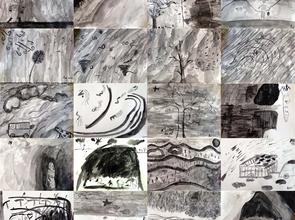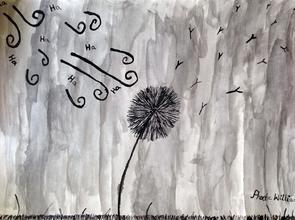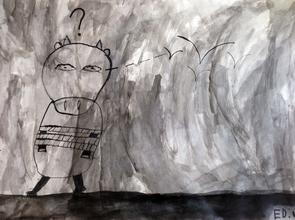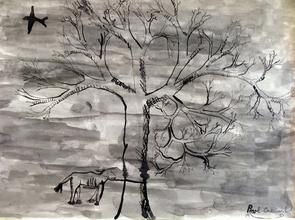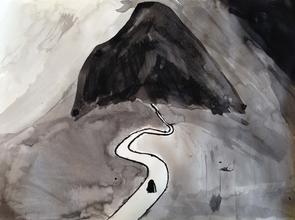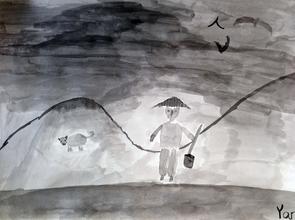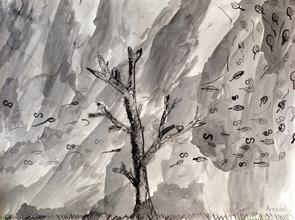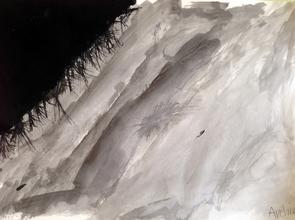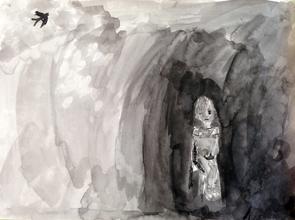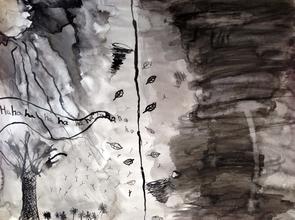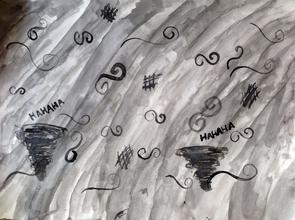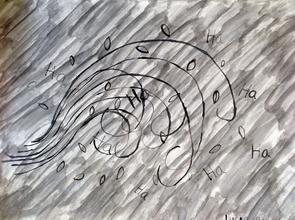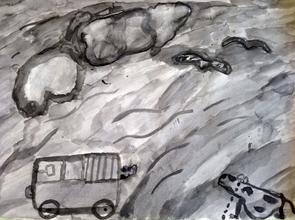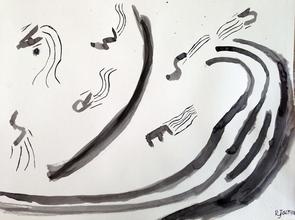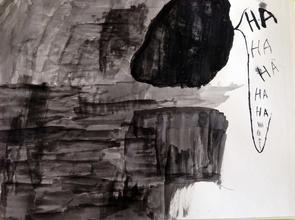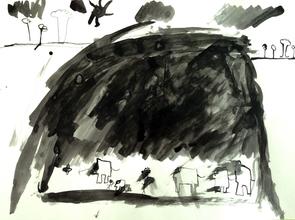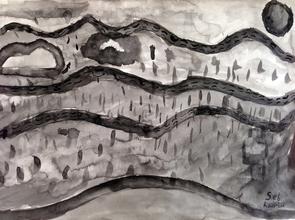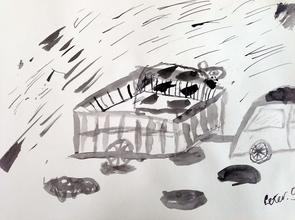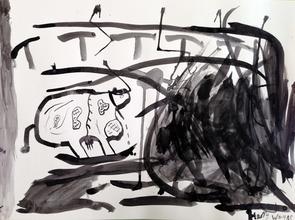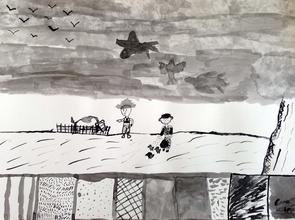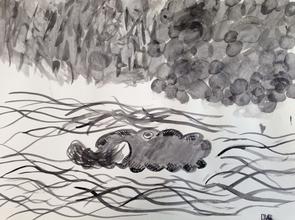
Sidcot School in partnership with The Children’s War Museum, an educational charity that explores historical and personal themes by following the lives of children and discovering history through their voices, recently held a three week exhibition of children’s drawings entitled ‘Children’s Story: children’s drawings from the Terezin ghetto 1943-1944’. The exhibition is a collection of drawings by young people who were residents of the Theresienstadt Ghetto in Czechoslovakia. The majority of these children ended their short lives in the extermination camps of Treblinka and Auschwitz, as did their Art teacher, a remarkable woman called Friedl Dicker-Brandeis, who had previously studied at the Bauhaus, under such illustrious teachers as Paul Klee and Wassily Kandinsky. Friedl firmly believed that life for the children should be made as normal as possible, and she also used the drawings as a form of art therapy.
Our children engaged with these emotional and evocative drawings to express their own imaginations. These pieces were taken from amongst those produced by our Year 7 and 8 students.
A Fantasy Landscape – by Nina Guy, Year 8
Stars were special. Helena knew that, which was why she was so frustrated she couldn’t make them right. Earlier that night, the nice lady, Friedl, had come and told her to make a picture. So she had taken the scissors, and the pot of paste, and cut up the bits of paper. The paper was frustrating, too, as it had nasty bits of writing on. She had taken it from the bin, because the guards didn’t give them anything to write with. The guards didn’t even let them go outside and they hit the children when they were annoyed. So Helena was making another place.
It was the place she went to in her dreams. Then she saw it. She was cutting out the moon, out of a nice blank bit, when her eyes noticed a name, a name she had looked at many times before. Helga Mandlova. It was almost her name, but not quite. It was her mother’s name, and she remembered her dark hair, her soft face, and her bedtime songs. She remembered the last song she had sung, sung as the tears poured down her face, told her she would go away for a while. Helga Mandlova. In her mother’s stories, she always said that God gave people signs: spoke through special people called prophets. Was this a sign?
Helena put down her scissors, and looked at the paper. She knew what the writing at the top meant. It meant: to the gas chamber. It meant that the bus had taken Oma, with the other ladies, crying and screaming to the gas chambers. It meant that she would never see her mother again. They were words, just cold words, ink and paper, but they meant so much. Helena looked at her picture: the spikey mountains, bushy trees, the wonky moon. And the stars. Always the stars. The world in the picture was the world in her dreams, but Helena knew with terrible certainty that dreams ended. And she that the night in her picture would end, as dawn came. So Helena knew, when dawn came, the stars would be gone.
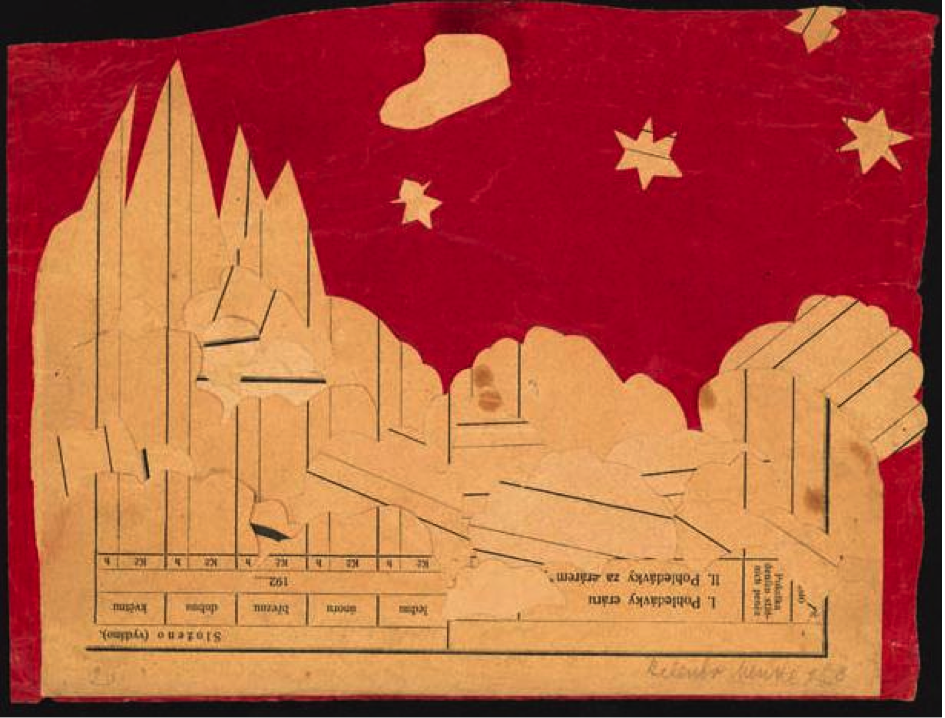
Above: 'Fantasy (Fantastic Landscape with Stars)'
by prisoner Helena Mandlova (21.05.1930 – 17.12.1941)
The Night Train – By Matthew Fisher, Year 7
Alice Guttmannova watching at night,
Looking at the trains that go by.
Frightened with fear to board that train,
Taking her to the gas and pain.
Every night she would count them by,
Waiting for that ominous train to sigh.
Screeching cries sounding from those trains;
Gives me goose bumps now and again.
I get to sleep only some nights:
Those when I don’t get the frights.
Untitled – by Ellie Kendall, Year 7
Loudly awakened;
Desperate lonely people wave.
Quietly silenced.
Imprisonment – by Immy Moroney and Lucy Slingsby, Year 8
One day I was taken away,
To somewhere foul and cruel,
Never to see my family,
Or see my friends at school.
Our room is cramped and cold,
We were imprisoned in the hold,
We were packed in like animals,
The walls were covered in mould.
We never got to do anything fun,
Or see the sun outside,
Never again to skip or run,
We were in for a hellish ride.
Every time you heard the truck humming,
You never knew who they would send,
Every time you saw it coming,
You knew it could be your end.
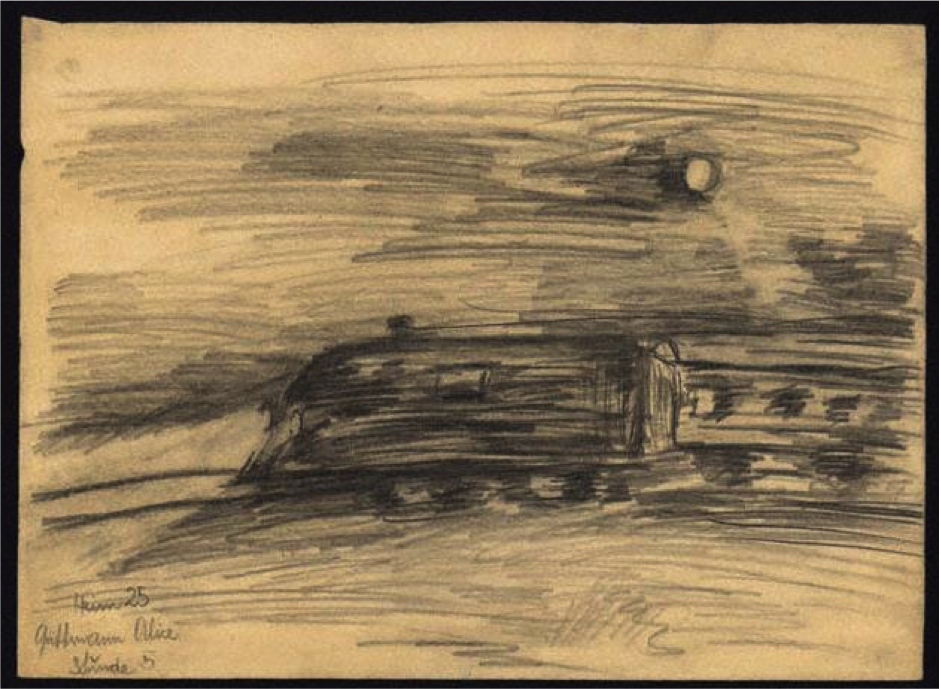
Above: 'The Night Train - pencil on paper'
by prisoner Alice Guttmannova (19.09.1928 – 16.11.1942)
Untitled – by Tom Lee, Year 7
Silent sound broken,
Wicked night train grinds to halt,
Image haunts me forever.
As well as writing poetry, our Year 8 Art students looked at the exhibition, and then Head of Creative Arts, Ross Wallis, sang a Yiddish song called ‘Donna Donna’, which has some very striking lyrics, and is sometimes seen in reference to the holocaust.
On a wagon bound for market, there’s a calf with a mournful eye, high above him, theres a swallow, winging swiftly through the sky - how the winds are laughing, they laugh with all their might, laugh and laugh the whole day through, and half the summer’s night.
Students each took a verse of the song, and created their illustrations from these words.
The idea is that we shall combine these striking images with poems that students have written in their English lessons and create a short animation of art, words and thoughts.
"Art constantly challenges the process by which the individual person is reduced to anonymity”
– Aharon Appelfield (1994).



